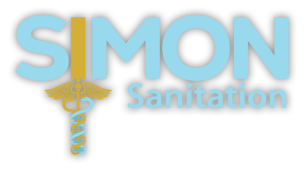Due to a better understanding there has been a major shift towards healthier buildings. Understanding the differences between cleaning, disinfecting, and sanitizing can help you better keep your business healthier. With this in mind, we at Simon Sanitation would like to elaborate on cleaning, disinfecting, and sanitizing in Palm Beach County, FL.
Cleaning Removes Germs
Removed from the environment are the allergens and microorganisms are done through cleaning. The dirt, germs, and impurities are cleaned from surfaces with soap or detergent. Though it does not necessarily kill any germs, cleaning helps reduce the number of germs that can lead to infection. To help increase employee productivity, cleaning alone can help. According to studies, 88% of 1,481 people polled noted that productivity and learning were hindered by dirty environments. Among other visible messes, this includes visible dirt and dust in corners and along walls, or dust, dirt, fingerprints, and marks on vertical and horizontal surfaces. However, cleaning alone increases the potential risk for cross-contamination when a disinfectant or germicide is not used.
Disinfectant Kills Germs & Viruses
In order to kill germs, disinfectants are used in the form of chemicals. By killing the germs, the risk of spreading infection is lowered, though it does not entail removing the dirt, germs, and impurities necessarily. The time frame directed on the label is essential for disinfectants to kill germs. Germs and pathogens may survive the application if the proper contact time is not properly adhered to.
Sanitizing Solution
Sanitizing is at a safe level as defined by public health standards to lower the germ count. Removing germs with cleaning or killing germs through disinfecting can create sanitary surfaces. Radiation, heat, and chemicals are among the different methods used to achieve a sanitary surface. Used at the appropriate temperature for the recommended amount of time, sanitize through use of steam, heat, hot water or hot air. Through use of ultraviolet radiation, sanitation can also be achieved. Including iodine, chlorine, and quaternary ammonium, chemicals that are effective sanitizers at the proper concentration can be utilized. A chemical sanitizer must also be allowed to sit for its recommended contact time which needs to be followed for a disinfectant to be effective. Temperature and concentration are other factors that influence the efficacy of a sanitizing chemical. The microorganisms may survive the application if the concentration of the sanitizing agent is too low. However, the chemical could be toxic if the concentration is too high.
Thermal & Cold ULV Disinfectant Foggers to Sanitize Surfaces in Jupiter, Canal Point, Pahokee, Palm Beach Gardens, Belle Glade, West Palm Beach, Boynton Beach, Delray Beach, Boca Raton, FL & Palm Beach County, Florida
To help you determine the level of cleanliness necessary for a particular surface is being able to understand the differences between these key phrases. Where the risk of spreading pathogens from the surface is low it is safe to clean surfaces in general. Where there is a greater likelihood of pathogen transfer such as on gym mats or during a coronavirus pandemic, a disinfectant should be used on surfaces. On contact surfaces with food as part of the food code, sanitizing is commonly used. When you need to have your home or business properly disinfected and sanitized, our solutions kill odors, allergens, bacteria and viruses. Call Simon Sanitation and let our experts assist you.




